Coffee and chocolate are perfect companions, and there may be a scientific reason for it.
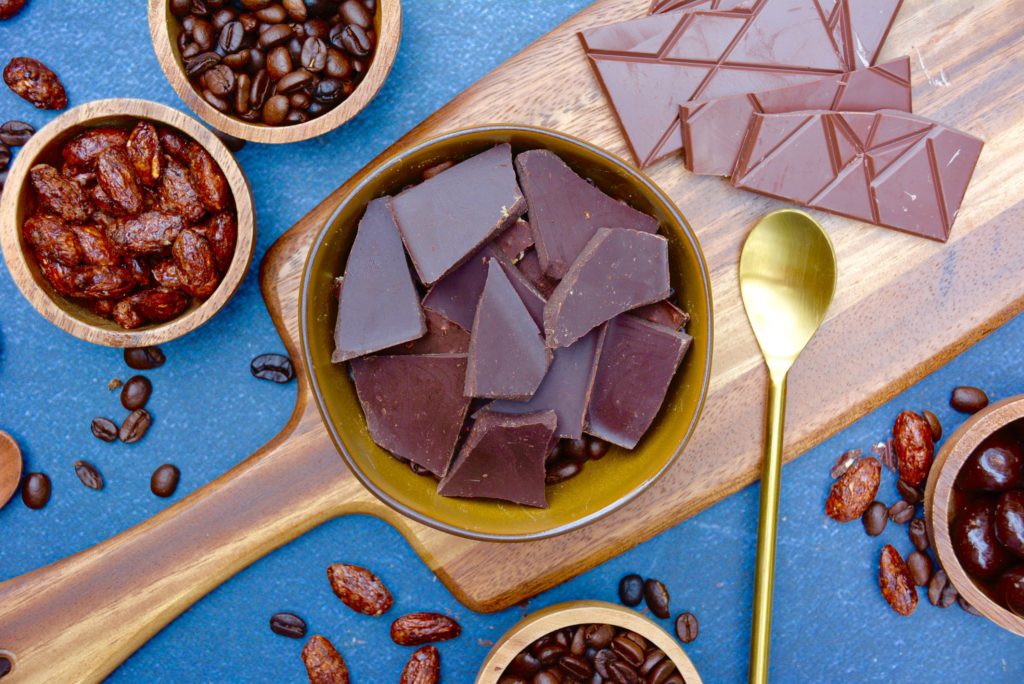
- Whether it’s a piece of chocolate on the side of your espresso or in the coffee itself (like a mocha!), people love pairing chocolate and coffee together.
- The main reason coffee and chocolate go so well together may be rooted in the fact that they are both seeds of tropical plants & go through a similar production process.
- Get our free handy chart (PDF) of the best coffee and chocolate pairings — jump to it here.
Chocolate goes with many different types of foods and beverages, but there’s something especially magical about the pairing of it with coffee. Like peanut butter and jelly, coffee and chocolate were meant to be. That’s likely why many chocolate and coffee infused desserts are out there and why the mocha latte came to be such a popular café selection.
The question is, however, why does chocolate and coffee pair so well together? We dug in to discover why.
Quick Links To Info In This Post
Why it works
Coffee and chocolate are both derived from tropical plants.
Coffee and chocolate’s excellent pairing capabilities may be rooted in the fact that they are both seeds of tropical plants. Both are grown about 20 degrees north and south of the Equator in a region known as the “Bean Belt.” This area is sunny, humid, and provides the perfect growing environment for these coffee and chocolate, or rather cacao, plants.
Coffee “beans” are derived from a cherry-like fruit that grows from a coffee plant — a woody evergreen that can grow up to 32 feet. The word “beans” is in quotes here because coffee “beans” are actually seeds (whoa…drop the mic). So you are actually enjoying the seeds of a fruit when you enjoy a cup of coffee.
Inside each cherry, there are usually two seeds, which coffee producers pick at just the right time to extract the most delicious flavor possible. The seeds are then ready to be fermented.
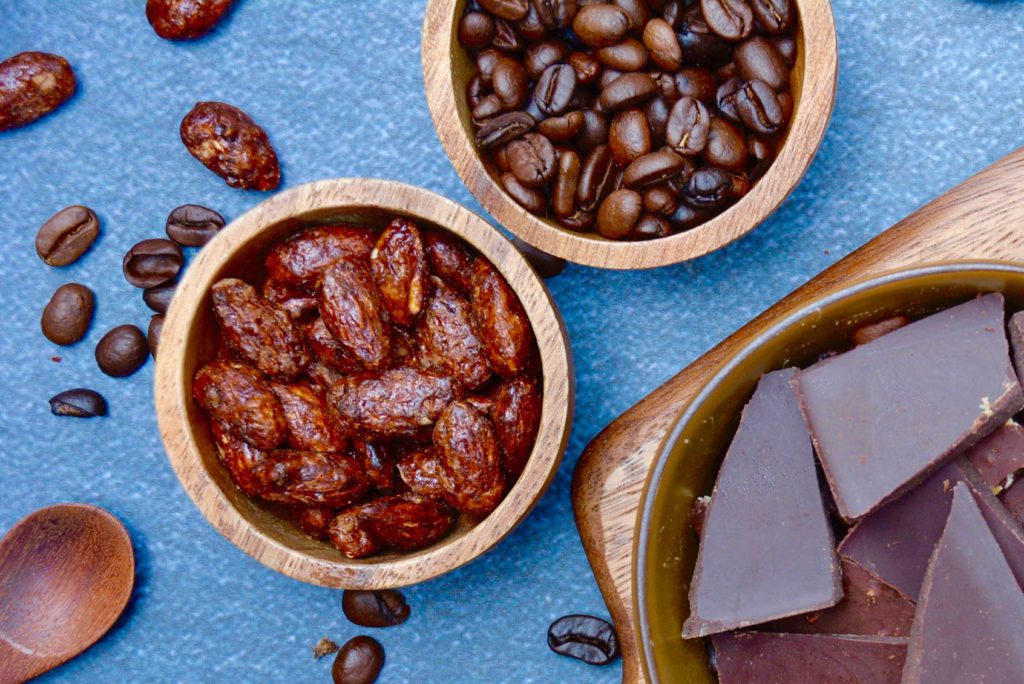
Chocolate comes from trees, specifically the Theobroma cacao tree. Cacao trees, similar to the coffee plant, can grow up to 30 feet tall and produce large pods or fruits that look exceedingly similar to small footballs.
Each pod contains 30 to 50 seeds, which is enough to make about seven milk chocolate bars or two dark chocolate bars. The pods are harvested twice a year in which the farmers open the pods by hand to access the seeds inside. From there, the seeds go on to the fermentation process (see next point below).
Chocolate and coffee go through a similar production process.
Cacao and coffee seeds go through a series of similar production steps from fermentation through the roasting stage that also may contribute to their perfect pairing potential.
After the seeds of the cacao trees and of the coffee plants have been harvested, they’re ready for the next stage of production — fermentation.
“Fermentation is a chemical process in which organic substances are broken down by various microorganisms into simpler molecules.”
In regards to coffee, the fermentation step removes the outer layer of the seed and lowers the water content, leaving us with green coffee beans — ready for roasting. The fermentation step also helps to add flavor to the beans. Coffee fruits are processed by one of three fermentation methods: wet, dry, or semidry. For details on each method, view this journal article on coffee fermentation and their impact on coffee quality.
When fermenting cacao seeds, the seeds are removed from their pods and placed in earthen pits or wooden bins and covered with banana leaves and left to ferment. This changes the bitter flavors of the seeds into something that’s more familiar to you and me. The fermentation process varies by the type of seed.
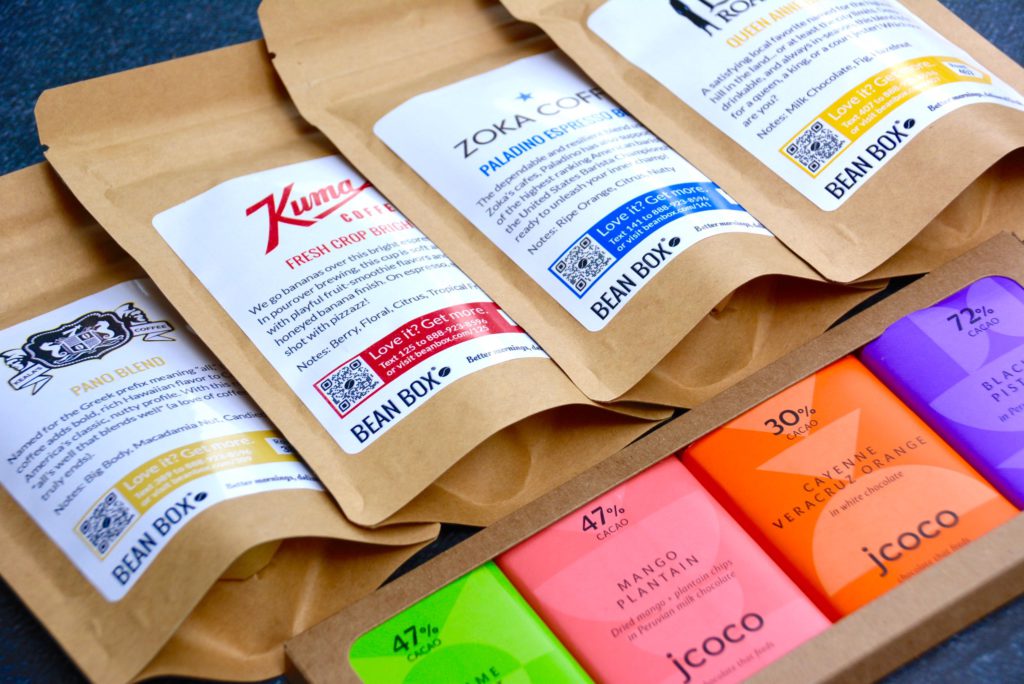
After the seeds or “beans” have been fermented, the coffee beans and cacao beans must be thoroughly dried and go through another series of steps before they’re finally ready for the roasting stage.
Once prepared for roasting, coffee beans can be roasted to different degrees depending on the desired result: dark, medium, or light. Coffee beans are typically roasted around temperatures of 550 degrees Fahrenheit with the goal of getting the beans to reach an internal temperature of 400 degrees Fahrenheit. Depending on the preferred roast level and bean origin, the roasting time will also vary.
See this post on home roasting coffee if you’d like to try to roast your own green coffee beans at home!
As for the cacao beans, the roasting process is slightly different in that the cacao beans need a more gentle treatment. They are roasted around temperatures of about 250 to 325 degrees Fahrenheit. The cacao beans must also be shelled prior for use in recipes.
The roasting process for the two beans types varies, but again you can see the incredible similarities between the two production processes for both chocolate and coffee.
Chocolate and coffee have a similar chemical makeup.
Now that you’ve seen how coffee and cacao are similar in their plant origins and production processes, it’s time to talk about their chemical makeup. That’s right, we’re going deep into the sciences for this one.
Both cacao and coffee contain caffeine, although to different degrees. They both also contain antioxidants, which are said to have health benefits. To be more specific, chocolate contains magnesium and bioflavonoids whereas coffee contains catechins — a type of flavonoid associated with health benefits.
Beyond this, both cacao and coffee have a wide range of different flavor profiles. Coffee contains over 1,000 flavor compounds (which is even more than wine!), whereas cacao has well over 600 aromatic compounds. All of this goes to say that there must be some overlap here making for some excellent pairings.
They both vary in taste depending on origin or region of growth.
In discussing their range of flavor profiles, it’s worth noting that cacao beans and coffee beans both vary greatly in taste depending on their region of growth. For instance, cacao beans grown in Madagascar may taste very fruity and tart, while in Mexico they may be more earthy and nutty.
Each region has its own set of harvesting and processing methods as well, which contributes to the varying cacao flavors. Some notable regions for cacao include Africa, especially Madagascar and Tanzania (70% of the world’s cacao beans come from Africa), Mexico, Hawaii, and Indonesia.
This is, dare we say, exactly like coffee beans. Coffee varies greatly by flavor depending on where it was originally grown. This is due to the growing conditions (i.e. climate, soil, etc.) of that particular region, therefore, producing a certain flavor profile unique to that area.

Coffee beans grown in Asia have a more earthy and herbal flavor profile whereas beans from Central and South America have a more nutty and caramel-like flavor. Single origin beans from Africa are typically most revered in the realm of specialty coffee as these beans tend to offer more complex and fruity flavors.
Note: While origin is important, it’s not the only element affecting the flavor of your cacao and coffee beans.
If you’d like to learn more about how coffees very by origin — take a look at this post on coffee flavor profiles by origin.
How to Pair Coffee and Chocolate
Flavor
When it comes to pairing coffee and chocolate, you must consider the dominant tasting notes of each. As mentioned previously, coffee and chocolate have an incredible range of flavor profiles. From fruity and bright to nutty and earthy, your coffee and chocolate will vary greatly in flavor.
There are a couple of ways to go about pairing coffee and chocolate flavors:
Like goes with like
As in wine pairing, like goes with like when pairing coffee and chocolate. If your coffee has a more delicate and fruity tasting profile, consider a fruity chocolate as your pairing (such as an African chocolate bar or a chocolate covered strawberry!). If your coffee is full of nutty & chocolatey tasting notes, go for a nutty chocolate bar or nut and chocolate dessert like toffee.
Complementary flavors
If you want something more interesting when it comes to your coffee and chocolate pairings, opt for complementary flavors. If your coffee boasts of a rather sweet flavor profile, be bold and go for a salty & chocolatey pairing such as a handful of chocolate covered cashews or a dark chocolate salted chocolate bar.
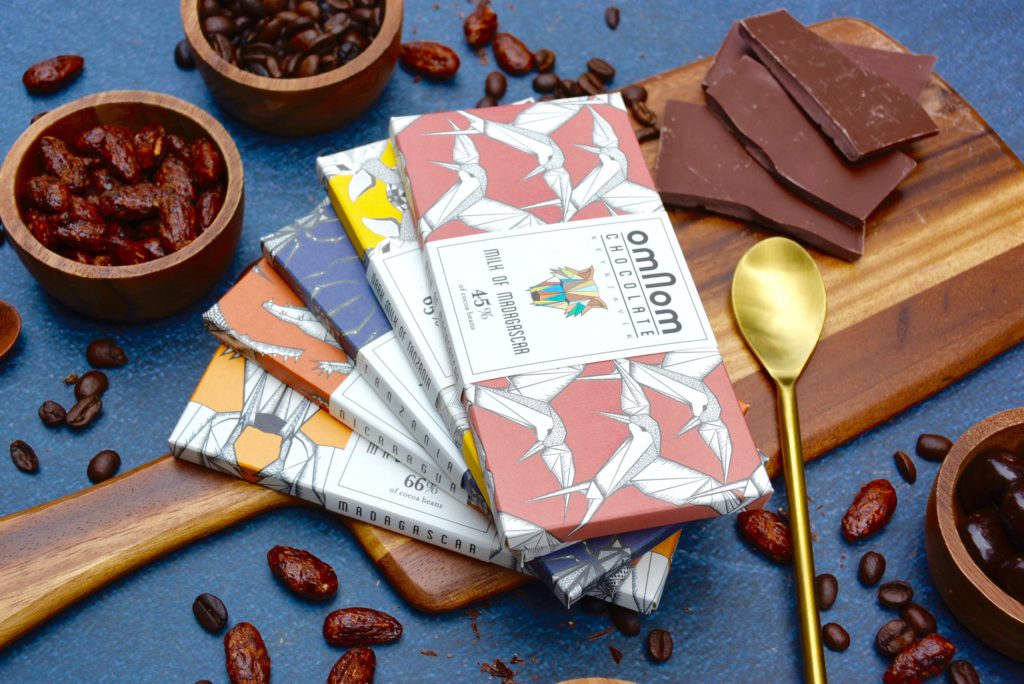
Acidity
Both chocolate and coffee can have variable acidities depending on how they’ve been processed and depending on their region of origin. Therefore, it’s helpful to consider the intensity of the coffee and chocolate you’re working with when pairing.
If your coffee is dark and strong, consider a lighter pairing such as a chocolate chip cookie or a small piece of milk chocolate to balance out the coffee’s intensity. On the other hand, if your coffee is light in body and flavor, it’s fine to opt for a richer pairing such as with a chocolate truffle.
Texture
Texture is another important factor to consider when pairing chocolate with coffee. Chocolate can be smooth and creamy such as in a milk chocolate bar or have more of a crunchy texture if it’s filled with nuts or rice. There’s also different chocolate-flavored desserts that have different textures such as cake, scones, or cookies, which you should also consider when pairing.
The food’s texture that you’re dealing with can help you determine the ideal serving temperature of your coffee. For instance, if the food is crumbly & firm such as in a chocolate biscotto, consider a hot coffee for dunking purposes to soften the biscotto. If the chocolate pairing is moist & soft in its texture profile, such as in a donut, you have a little more freedom and can opt for whatever temperature coffee you’d like such as an iced coffee or a hot latte.

Favorite Coffee and Chocolate Pairings
- Chocolate covered bananas with an Ethiopian coffee
- Gourmet dark chocolate with Guatemalan coffee or Colombian coffee
- Milk chocolate with a triple shot latte
- Chocolate truffle with a medium roast coffee
- Chocolate cake or cupcake with an espresso
- Brownies with a cold brew or flash-chilled cold brew
- Pain au chocolat with an Ethiopian coffee
Get even more chocolate and coffee pairings in this free Chart
Download the Food & Coffee Pairing Chart (PDF)

Hang this chart on your fridge to help you find your next food and coffee pairing!
Sign up for the BBB newsletter to download the chart for free!
Gourmet Chocolate & Specialty Coffee Recommendations
Note: I may earn a small commission when you make a purchase through some of the below links. Read my disclosure policy to learn more.
Omnom Chocolate
Omnom Chocolate offers some of the best chocolate out there if you’re looking to treat yourself to something extra special. This bean to bar chocolate uses the finest cacao beans in the world. Plus, Omnom Chocolate has an incredible range of chocolate bar varieties (from white to milk to dark and beyond!) including a number of single origin bars.
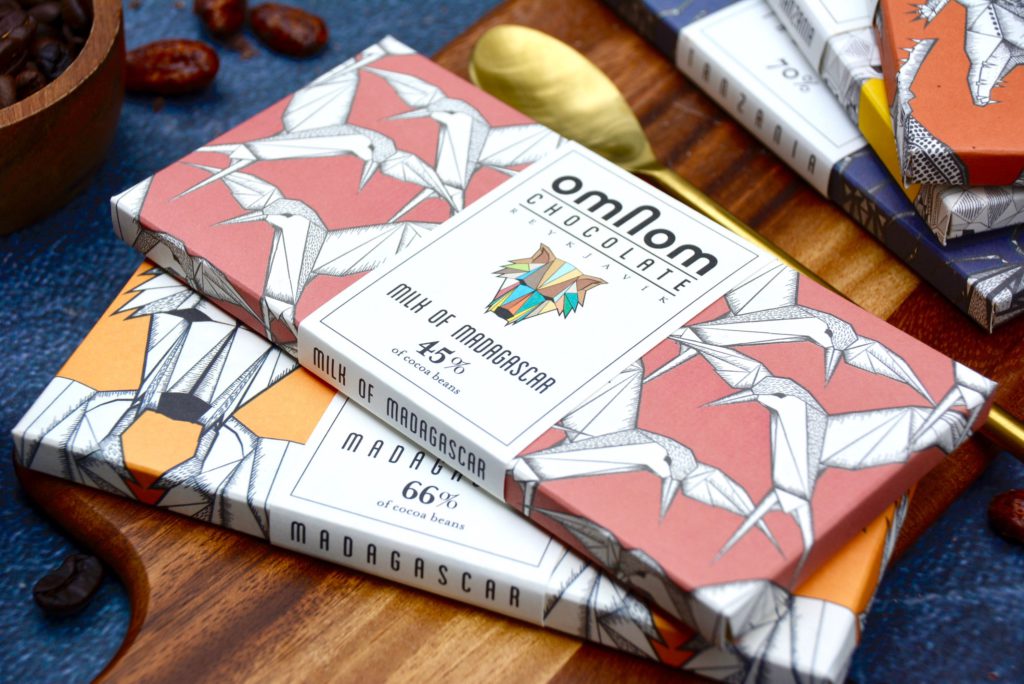
In the case of chocolate, single origin is typically revered (just like with coffee) as it means the cacao beans were sourced from the same region (and do not consist of a blend of beans from several regions). Single origin chocolate is special because it will have a very region-specific flavor that can get lost when cacao beans are blended. This allows you to taste something incredibly distinct that you wouldn’t find at your local grocer.
We’ve found that pairing Omnom’s single origin chocolate bars with our single origin coffee to be such a decadent tasting experience. These bars are great for pairing with medium roast coffees, as they tend to be very bright and fruity (in the best way!).
Omnom offers single origin chocolate bars from Madagascar, Nicaragua, Tanzania, and Peru.
Where to buy: Amazon or Omnom Chocolate
Bean Box
If you’d rather have someone do all of the pairing work for you, Bean Box has got your covered. They’re currently offering a gourmet chocolate and freshly-roasted coffee pairing gift set. This allows you to pair 4 different artisan coffees with 4 unique chocolates. It’s an indulgent tasting experience worth trying!
The Coffee + Chocolate Tasting box features 4 freshly-roasted coffees, 4 artisan chocolates, and recommendations for the best pairings.
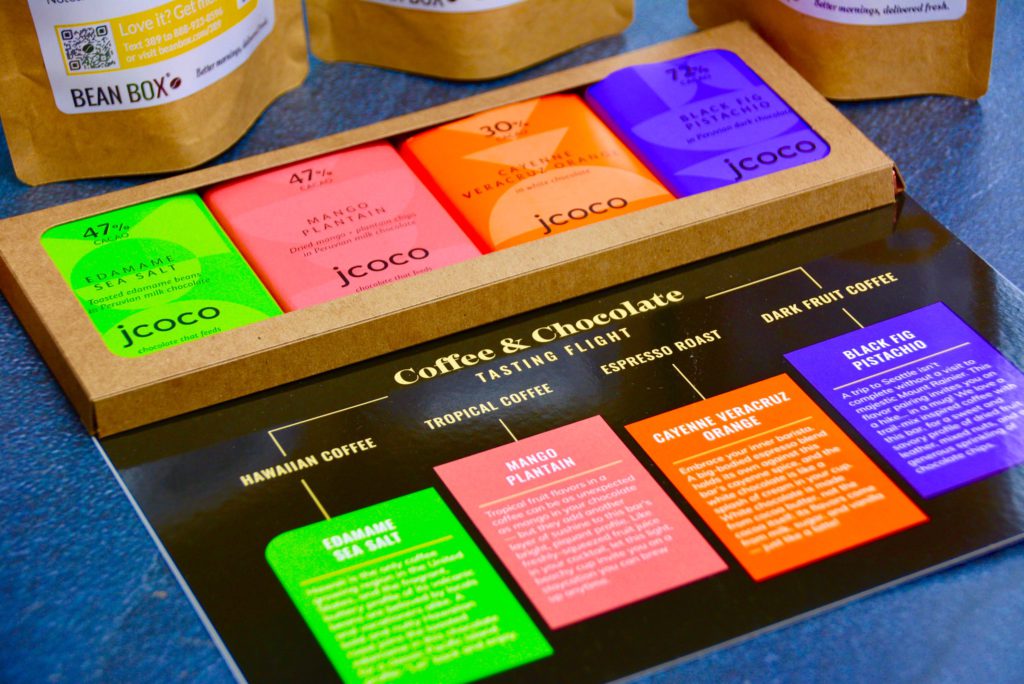
Where to buy: Amazon or Bean Box
FAQ
Do coffee and chocolate go together?
Coffee and chocolate go together perfectly. The similarities in their chemical makeup, similar plant growth, and processing make them the perfect of companions.
What happens when you put chocolate in coffee?
Depending on the chocolate you put in your coffee, you may have just made yourself a mocha (a combination of chocolate sauce and coffee!).
But it’s more likely that your chocolate just melts to the bottom of your coffee cup.
Why are coffee and chocolate so good together?
The main reason coffee and chocolate go good together may be rooted in the fact that they are both seeds of tropical plants and they go through a similar production process (i.e. fermenting, roasting, etc.).
How do you pair coffee and chocolate?
To pair coffee and chocolate properly, here are a two simple guidelines:
- Like goes with like – As in wine pairing, like goes with like when pairing coffee and chocolate. If your coffee has a more delicate and fruity tasting profile, consider a fruity chocolate as your pairing. If your coffee is full of nutty & chocolatey tasting notes, go for a nut-filled chocolate bar such.
- Complimentary flavors – If you want something more interesting when it comes to your coffee and chocolate pairings, opt for complementary flavors. If your coffee boasts of a rather sweet flavor profile, be bold and go for a salty chocolatey pairing such as a handful of chocolate covered cashews or a dark chocolate salted chocolate bar.
A few excellent examples of chocolate and coffee pairings include: Chocolate covered strawberries with an Ethiopian coffee, gourmet dark chocolate with Guatemalan coffee or Colombian coffee, milk chocolate with a triple shot latte, and pain au chocolat with an Ethiopian coffee.
Is coffee and chocolate the same?
No, coffee and chocolate are not the same. Coffee and chocolate come from two different plants. Coffee “beans” (they’re actually seeds) are derived from a cherry-like fruit that grows from a coffee plant — a woody evergreen that can grow up to 32 feet. Chocolate comes from trees, specifically the Theobroma cacao tree.
Cacao trees, similar to the coffee plant, can grow up to 30 feet tall and produce large pods or fruits that look exceedingly similar to small footballs
Download the Food & Coffee Pairing Chart (PDF)

Hang this chart on your fridge to help you find your next food and coffee pairing!
Sign up for the BBB newsletter to download the chart for free!
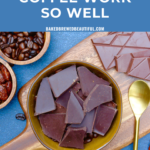
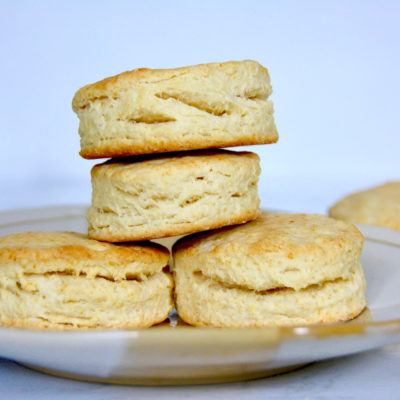
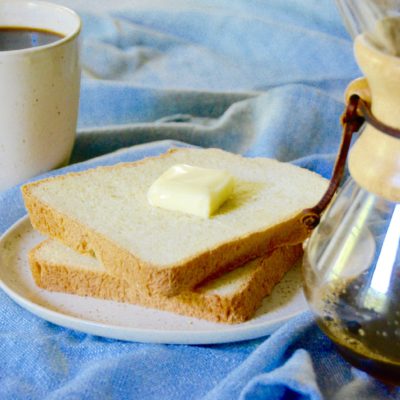
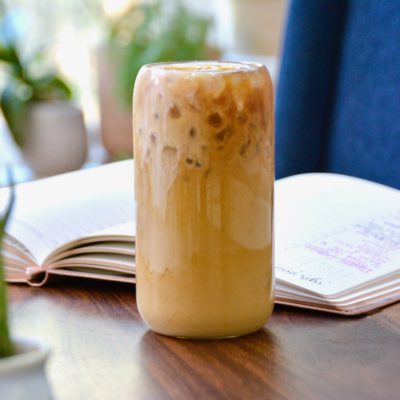
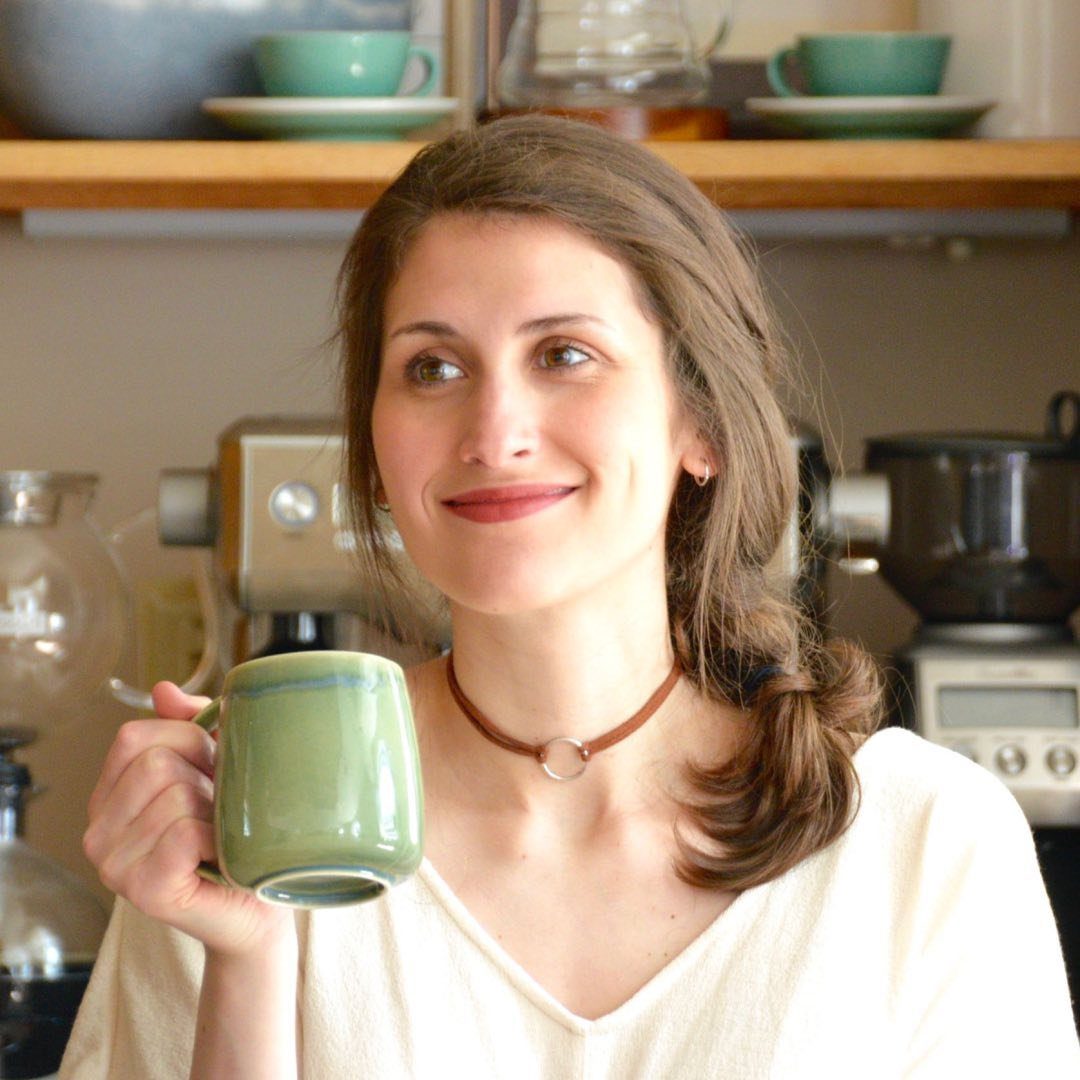

I would love to read about the economics of coffee production: How much do coffee pickers earn per day? How much does one day’s pickings sell for? How much are the onsite (on farm) coffee processors paid? How much do green beans sell for?
Also, quality issues: Which is superior, a riper bean or a less ripe bean? Which is superior, a smaller bean or a larger bean? If there’s “little difference” between hulled and unhulled beans, then why bother taking the parchment off them at all?
Thanks Jan, for letting me know! I would be happy to dive into that separate topic within a separate post. As you mentioned, there’s so much that can be covered within the realm of coffee production, it deserves its own dedicated article. Thank you again for the topic suggestion.
This was one of the best blog posts I’ve read in a loooong time. Informative without over-explaining. I learned so much, thank you!